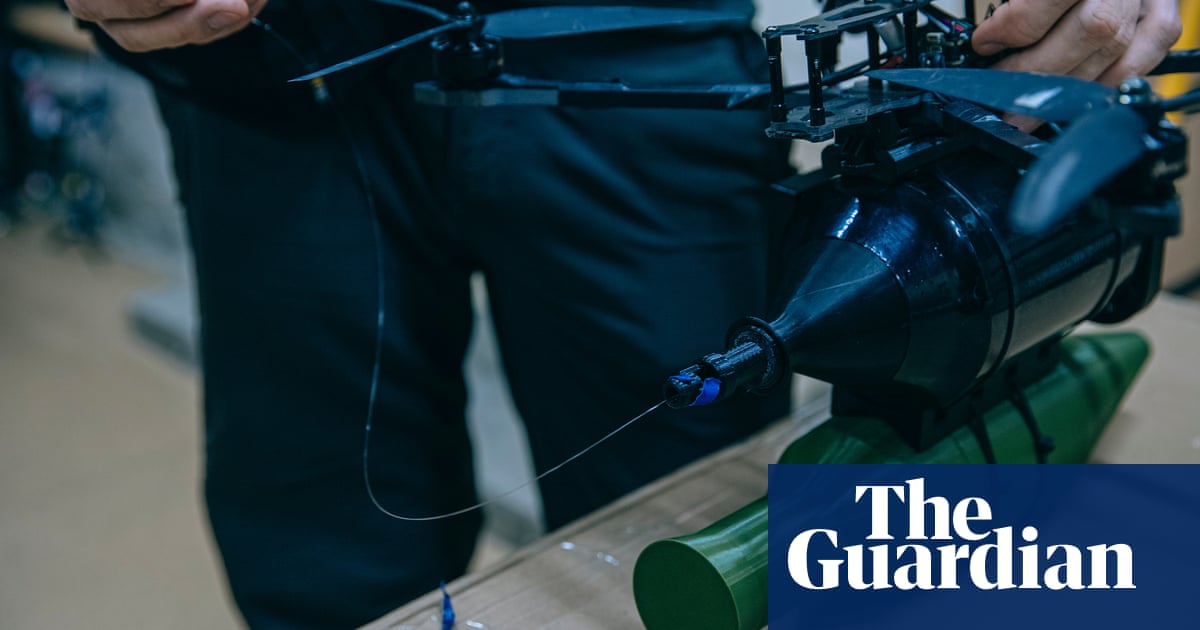At a secret workshop in Ukraine’s north-east, where about 20 people assemble hundreds of FPV (first person view) drones, there is a new design. Under the frame of the familiar quadcopter is a cylinder, the size of a forearm. Coiled up inside is fibre optic cable, 10km (6 miles) or even 20km long, to create a wired kamikaze drone.
Capt Yuriy Fedorenko, the commander of a specialist drone unit, the Achilles regiment, says fibre optic drones were an experimental response to battlefield jamming and rapidly took off late last year. With no radio connection, they cannot be jammed, are difficult to detect and able to fly in ways conventional FPV drones cannot.
“If pilots are experienced, they can fly these drones very low and between the trees in a forest or tree line. If you are flying with a regular drone, the trees block the signal unless you have a re-transmitter close,” he observes. Where tree lined supply roads were thought safer, fibre optic drones have been able to get through.



That was actually where my mind went first too. The big issue with current drones is signal strength and jammers. But if you’re able to just plop a wired signal repeater anywhere you can get a drone, then that solves a lot of the issues with signal strength. The article even mentions that these fiber drones are being used for forested deployments, where trees would normally block signals. But what if you just use the fiber drone as a repeater? Now you can send out your wireless drones without any of the issues of carrying a wire.